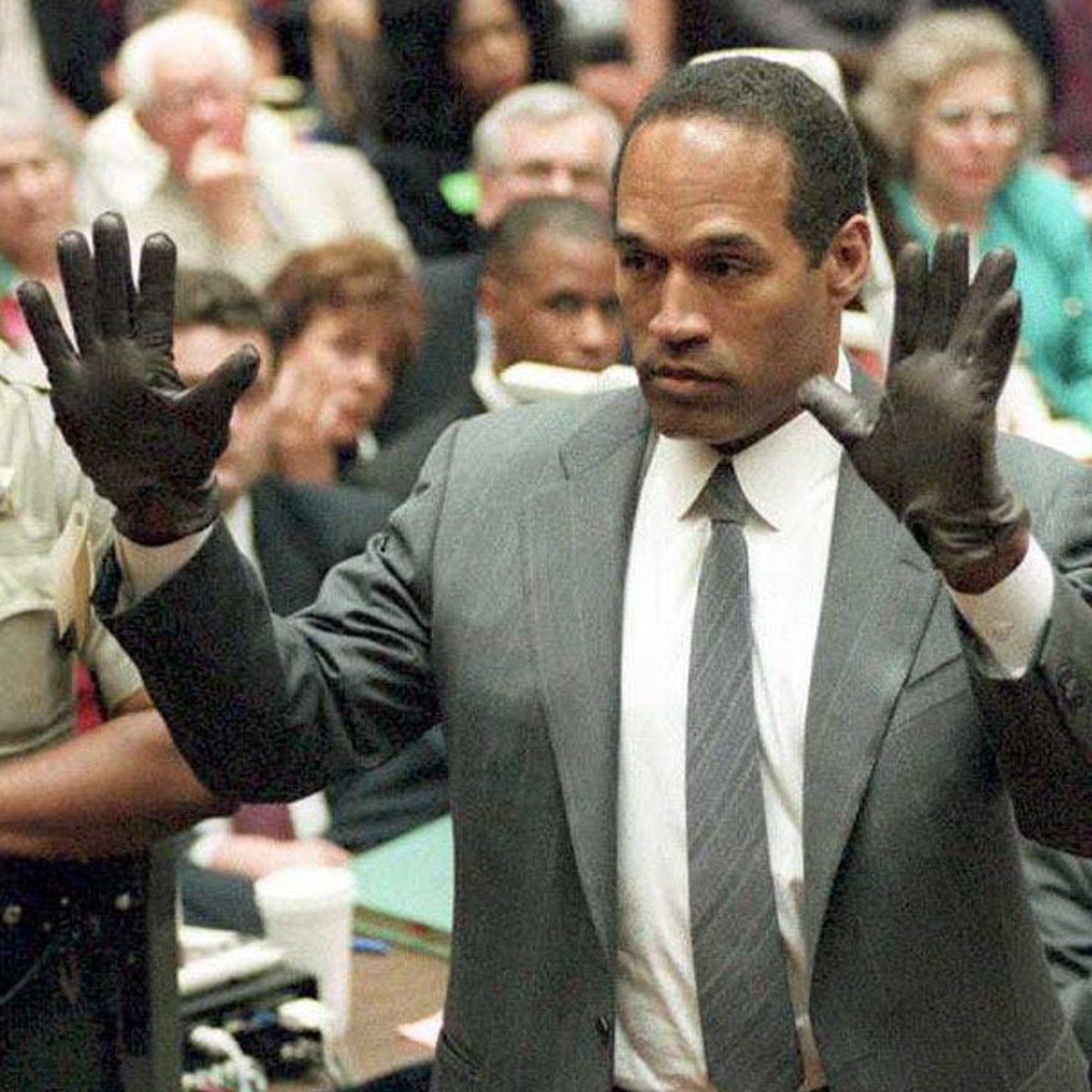
When a jury acquits, that’s not necessarily it.
It has been 30 years since O.J. Simpson was acquitted of the murders of Nicole Brown Simpson and Ronald Goldman. Although Judge Lance Ito immediately ordered his release from jail, the case has remained a subject of public interest and debate ever since.
Instead, the verdict reached on October 3, 1995, was just the start of a much larger conversation. It prompted deep examination of what the case of People of the State of California v. Orenthal James Simpson revealed about celebrity, race, class, the justice system, and many other complex issues-not to mention the impact on those directly involved in the trial.
Before O.J. Simpson was accused of murdering his ex-wife and her companion on the night of June 12, 1994, many well-known figures had faced serious accusations. Los Angeles was also no stranger to high-profile trials; the first trial of the Menendez brothers, for example, had taken place just a year earlier. It was a city accustomed to sensational legal battles.
However, no previous case had ever captured quite so much public attention, completely taking over cable news and late-night talk shows. It even interrupted sports broadcasts and brought a range of personalities-like Kato, Clark, Cochran, and Kardashian-into the spotlight for everyone to know.
The conversation quickly filled with topics related to the case, starting with the famous slow-speed car chase that happened before Simpson was arrested. People also talked about the Naked Gun actor’s firm denial of guilt – he claimed he was “absolutely, 100 percent not guilty” – at his first court appearance. Then there was the issue with the glove that didn’t fit, and how the defendant’s highly skilled legal team, nicknamed the “dream team,” effectively discredited many of the prosecution’s witnesses.
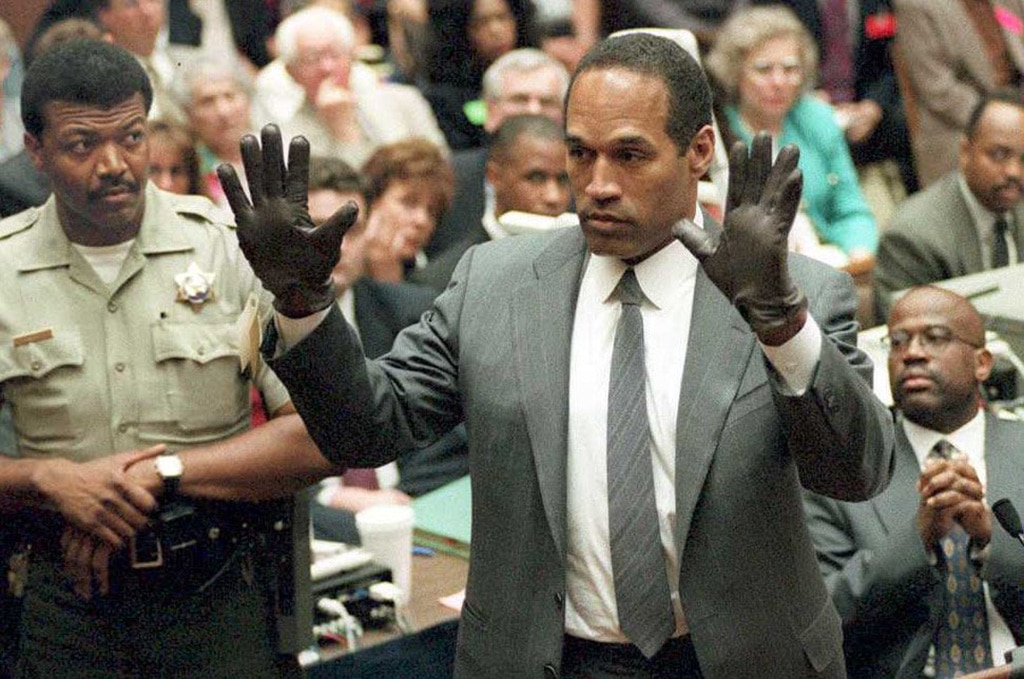
Once everything was finished, the 473-day trial cost the city of Los Angeles more than $10 million, and Simpson-who passed away on April 10, 2024, at age 76-was found not guilty and released. (He would later be convicted of robbery in 2008 and serve a nine-year prison sentence, but that is a separate matter.)
The result was either uplifting or devastating, depending on your perspective. In 1995, it was difficult to find anyone who didn’t have a strong opinion, as over 100 million people paused their activities to tune in on television and hear the verdict read.
Honestly, nothing has *really* gripped the whole country like it did since then – and it’s weird, because TV just isn’t watched the same way anymore, except maybe during the Super Bowl – but back then, the Simpson trial? It was the biggest thing on television, period. I was *completely* glued to it, and so was everyone I knew. It felt like the whole nation was watching, analyzing every single detail. It was just… captivating.
And here’s a sampling of the bizarre twists and turns that kept people watching:
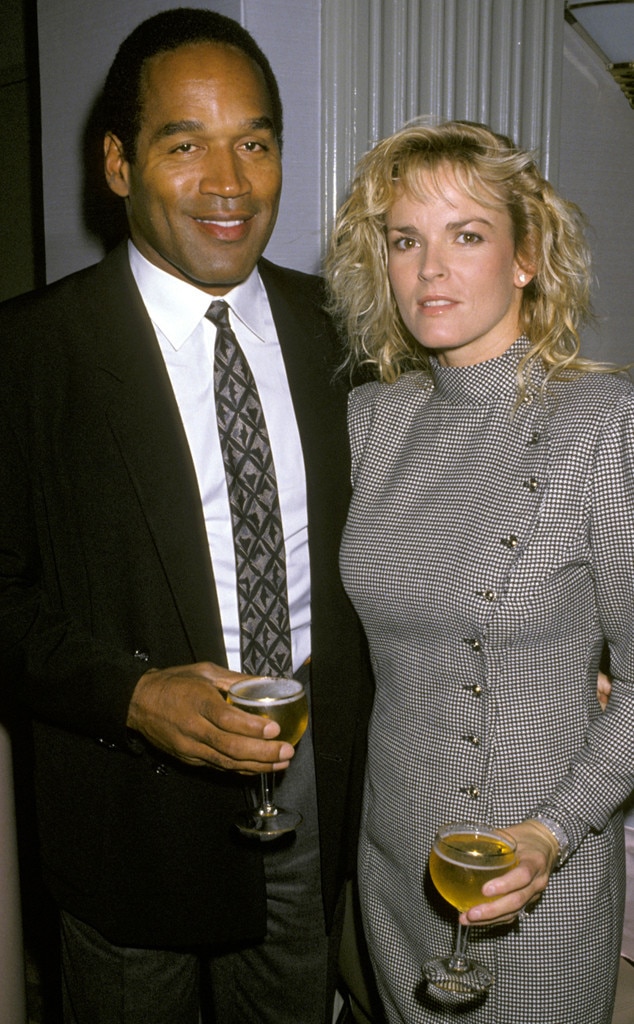
O.J. Simpson and Nicole Brown first became acquainted in 1977. He finalized his divorce from his first wife, Marguerite, in 1979. They married on February 2, 1985, and welcomed their daughter, Sydney, eight months later. Their son, Justin, arrived in 1988.
“You guys never do anything,” Nicole told police when they arrived at the Simpson home at 360 N. Rockingham Ave. in L.A.’s upscale Brentwood neighborhood. They were responding to a call about domestic abuse in the early morning hours of January 1, 1989, according to reports from that night. “You never do anything. You come out. You’ve been here eight times. And you never do anything about him.”
Simpson maintained that he hadn’t hit Nicole, claiming he only pushed her out of bed. When asked to accompany the officers to the police station, he instead drove away. Several days later, Nicole visited the station and indicated she didn’t want to press charges, but she agreed to try resolving the issue through out-of-court mediation.
After pleading no contest to a misdemeanor domestic violence charge, Simpson received a sentence on May 24, 1989, that included 24 months of probation. He was also ordered to complete 120 hours of community service, pay $470 in fines, and attend counseling sessions twice a week – which he was permitted to do over the phone.
Nicole and her children, Justin and Sydney, eventually left the family home, and she filed for divorce in February 1992. The divorce was finalized that October, with O.J. agreeing to a settlement that included a one-time payment of $433,750 and $10,000 monthly for child support. Nicole also kept ownership of a rental property. Later, she purchased a condo at 875 S. Bundy Drive in Brentwood and moved in during January 1994.
Throughout this period, Simpson would swing between threatening Nicole and attempting to reconcile with her. Prosecutors and witnesses stated that O.J. repeatedly stood outside and peered into her window, even once while she was with a boyfriend. As detailed in Jeffrey Toobin‘s 1996 book The Run of His Life, Nicole wrote in her diary on June 3, 1994, about a recent threat from Simpson: “You hung up on me last night, you’re gonna pay for this bitch…You think you can do any fking thing you want, you’ve got it comming [sic]…” and continued in a similar vein.
On June 7, 1994, she contacted a women’s shelter in Santa Monica, sharing her distress that her former partner was stalking her. Tragically, she was found deceased just five days later.
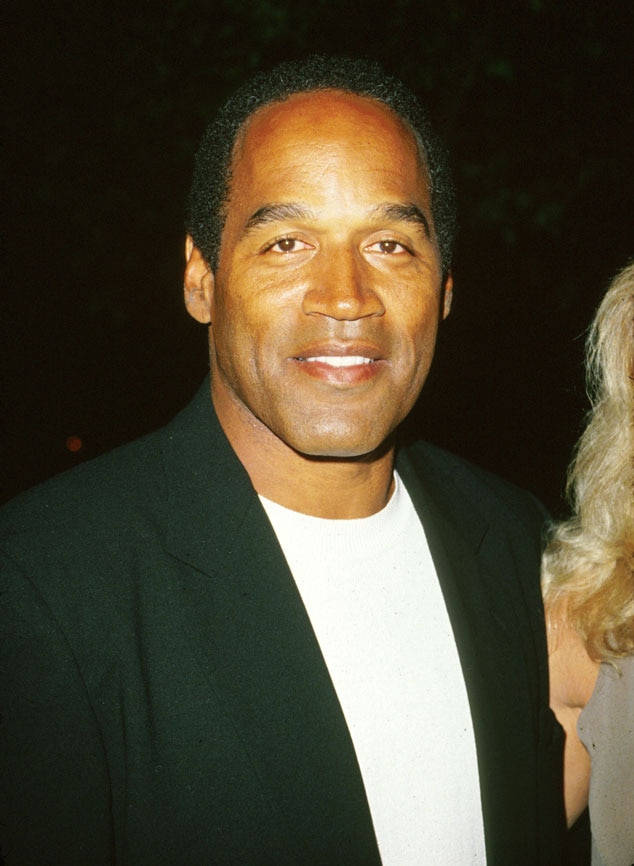
TIME magazine faced criticism for making O.J. Simpson’s skin tone appear darker when it published his mugshot on its cover in June 1994. Critics argued that this was a deliberate attempt to emphasize the stereotype of a Black man as a criminal suspect, and they noted that Newsweek published the same photo without changing its color.
In a statement posted on an AOL message board (does anyone remember AOL Time Warner?), managing editor James R. Gaines explained that neither TIME magazine nor the artist had any racial intent. However, he confirmed that the LAPD had provided a specific photo to an artist with the intention of having it transformed into cover art – allowing the artist to interpret it freely.
Gaines stated, “One could reasonably claim that associating darker skin tones with evil is racist, but regardless: If this statement caused any hurt feelings, I sincerely apologize.”
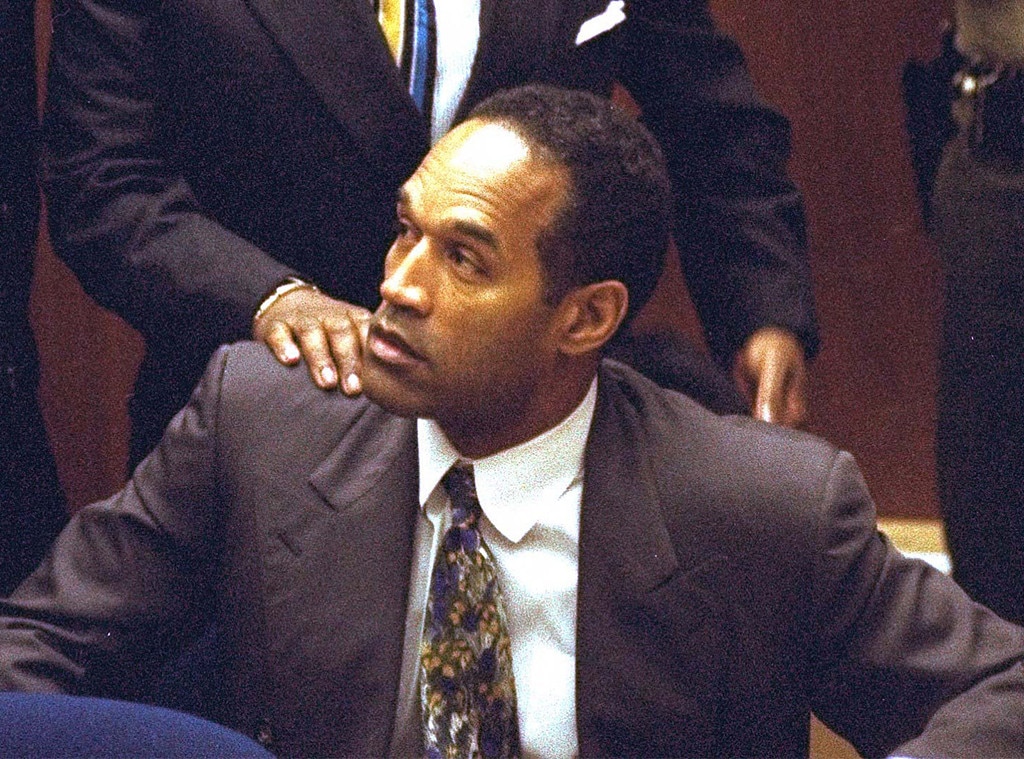
Many books have explored this case, including O.J.’s own controversial 2007 book, If I Did It: Confessions of a Killer. However, his initial account came with I Want to Tell You, published on January 7, 1995, very early in the trial proceedings.
The book was said to be made up of the defendant’s responses to the thousands of letters he received while in jail. It was an effort to control the narrative before the prosecution could present him as a dangerous abuser who had followed through on his threats. The book went on to sell over 650,000 copies.
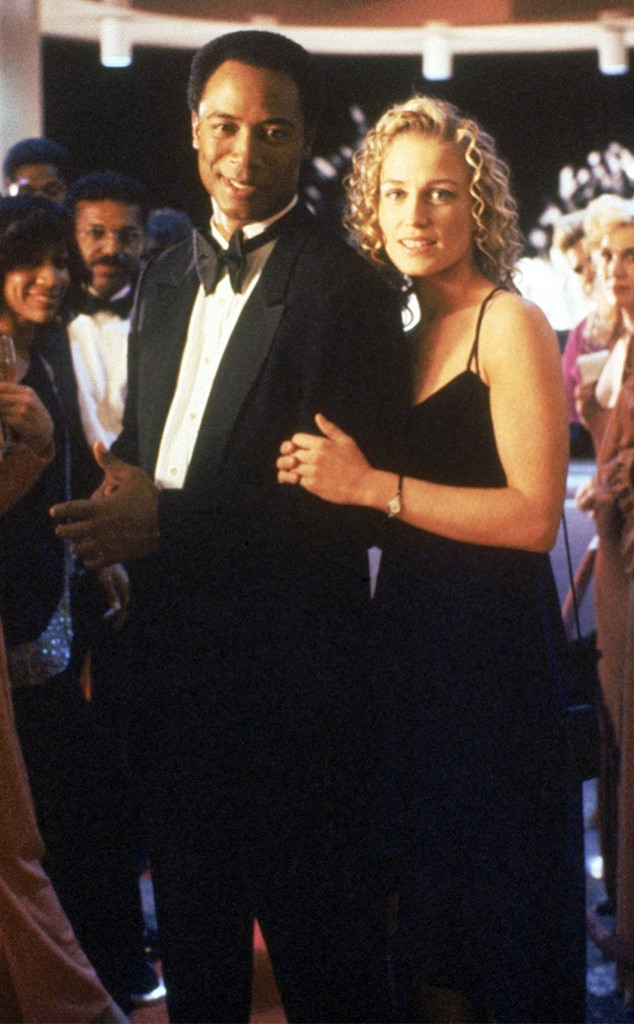
Long before the O.J. case was dramatized in the Emmy-winning series The People v O.J. Simpson: American Crime Story and Ezra Edelman received an Oscar for the extensive documentary O.J.: Made in America, a TV movie called The O.J. Simpson Story, featuring Bobby Hosea and Jessica Tuck, quickly aired on Fox. This movie primarily focused on the troubled relationship between O.J. and Nicole.
The New York Times described it as a film the defense team would likely object to the jury viewing, and as an unintended response to O.J.’s book, which they characterized as presenting only his side of the story.
Fox made a point of not airing the TV movie until the jury had been sequestered.
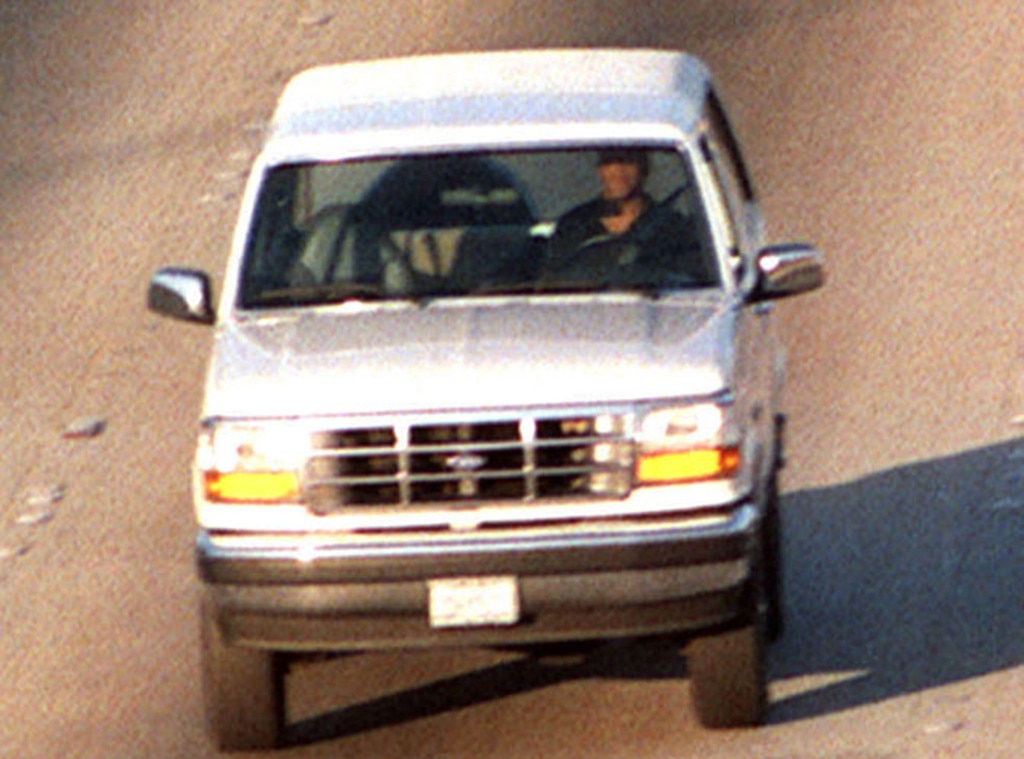
A rather self-assured Marcia Clark chose not to call Jill Shively as a witness during the trial. Shively had told the grand jury she saw O.J. Simpson in his white Bronco speeding down Bundy Drive shortly after 10:45 PM on the night of the murders. Furthermore, Clark directed the grand jury to disregard Shively’s account, stating she couldn’t ethically ask them to consider evidence she didn’t fully believe.
Clark was truly angry that Shively had spoken with Hard Copy before her scheduled testimony. The prosecutor believed she already had enough other witnesses and evidence to convict O.J. Simpson. She didn’t need another piece of evidence linking him to the crime scene within the relevant timeframe.
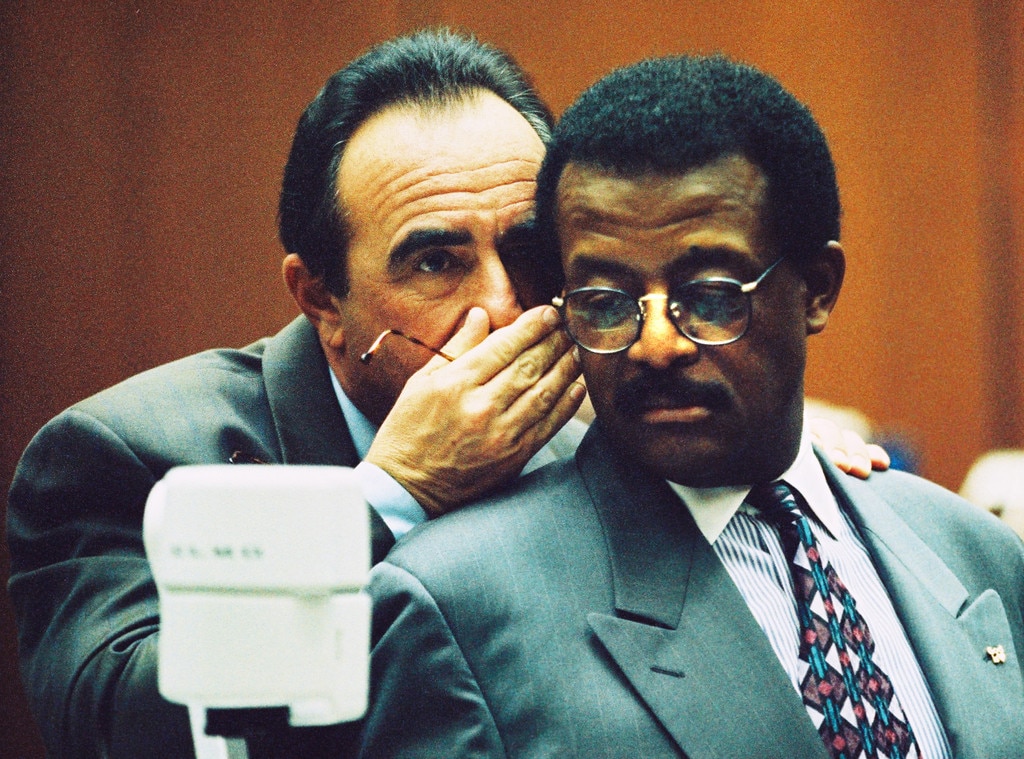
O.J. Simpson failed a lie detector test that his lawyer, Robert Shapiro, had set up, scoring a very low minus-24, as detailed in The Run of His Life. While polygraph results can’t be used as evidence in court, they can influence how an investigation proceeds and help lawyers develop the most effective defense strategy.
Alan Dershowitz, who primarily offered guidance to the defense team remotely while a professor at Harvard, explained to the New York Daily News in 2016-when FX’s The People v. O.J. Simpson was a popular topic of conversation-that the release of the polygraph test results potentially indicated a breach of confidentiality between lawyers and their client.
According to Dershowitz, only four people were aware of the polygraph examination. He stated, “I wasn’t among them.” Those four individuals were [Robert] Kardashian – who has since passed away – Bob Shapiro, O.J. Simpson, and the examiner who administered the test.
However, maybe there were more.
According to F. Lee Bailey, a member of O.J. Simpson’s defense team who wasn’t a fan of Shapiro then or now, his co-counsel made a critical error early in the case. He told Huffington Post’s Highline in 2019, “He really messed up the case on day one by giving O.J. a polygraph test that had no chance of being accurate. You should never do that in a situation like that, and he immediately called me asking what to do. I told him, ‘First, stop acting like that! You call me *before* you give a polygraph test, for goodness sake!’ I saw the results before he destroyed them, and they were completely unreliable.” (Shapiro did not respond to Bailey’s comments.)
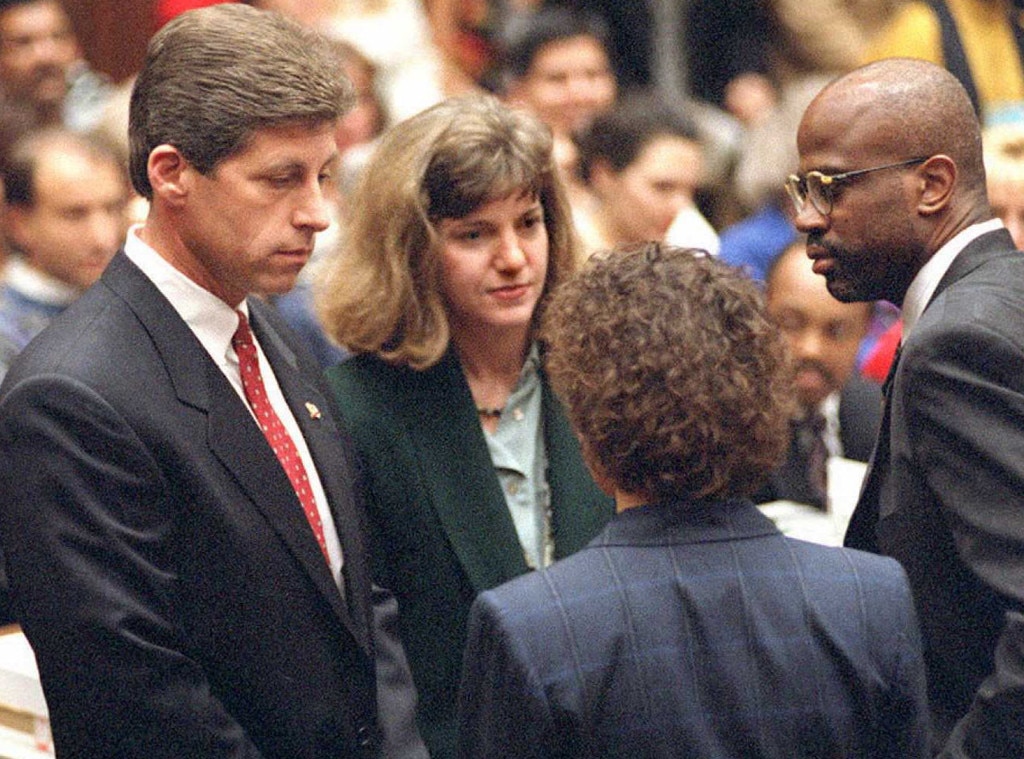
Prosecutors believed O.J. Simpson didn’t act alone, TIME magazine later detailed. They directed officers to monitor O.J.’s longtime friend and close advisor Al Cowlings and O.J.’s son, Jason, from his previous marriage. However, they were unable to find any proof that Simpson had an accomplice.
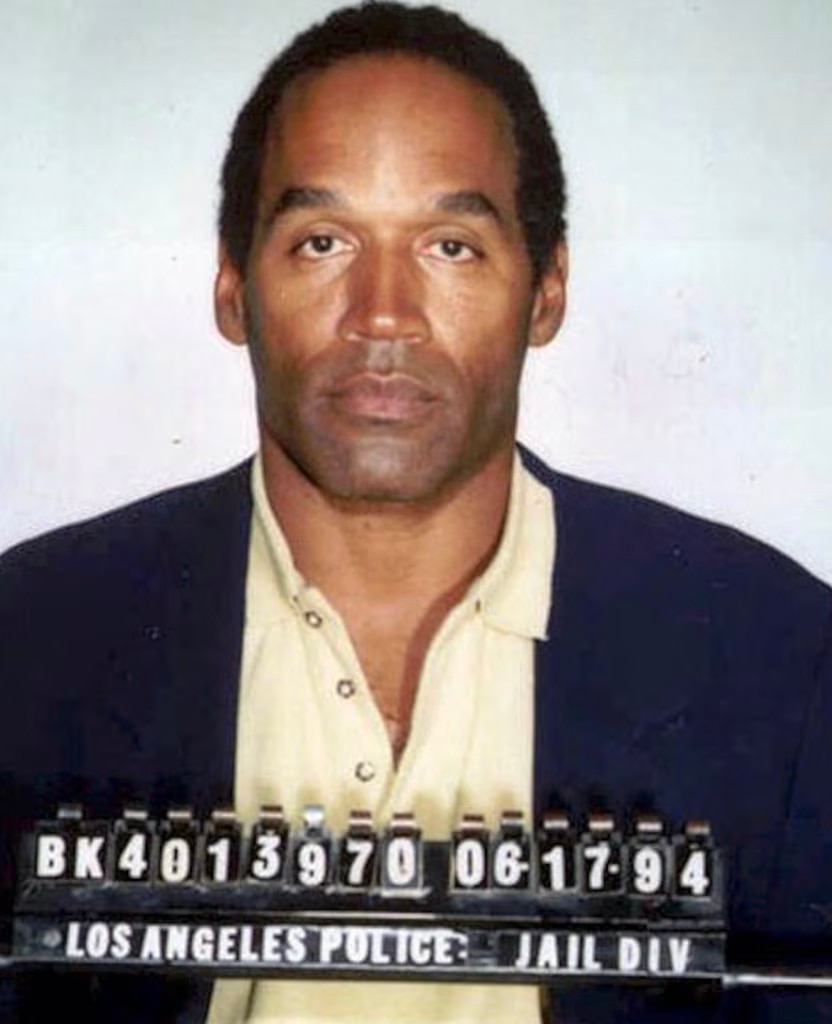
Following a 50-mile pursuit across several Los Angeles freeways – with O.J. in the backseat and Al Cowlings driving O.J.’s white Ford Bronco – O.J. gave himself up at his home and was arrested on June 17, 1994. He was held in jail without bail throughout the trial. His time under suicide watch cost taxpayers $81,000, and after that, his imprisonment averaged $55.69 per day. Details of the chase are still debated today.
According to the L.A. County auditor’s office, the case cost the city about $800,000 a month.
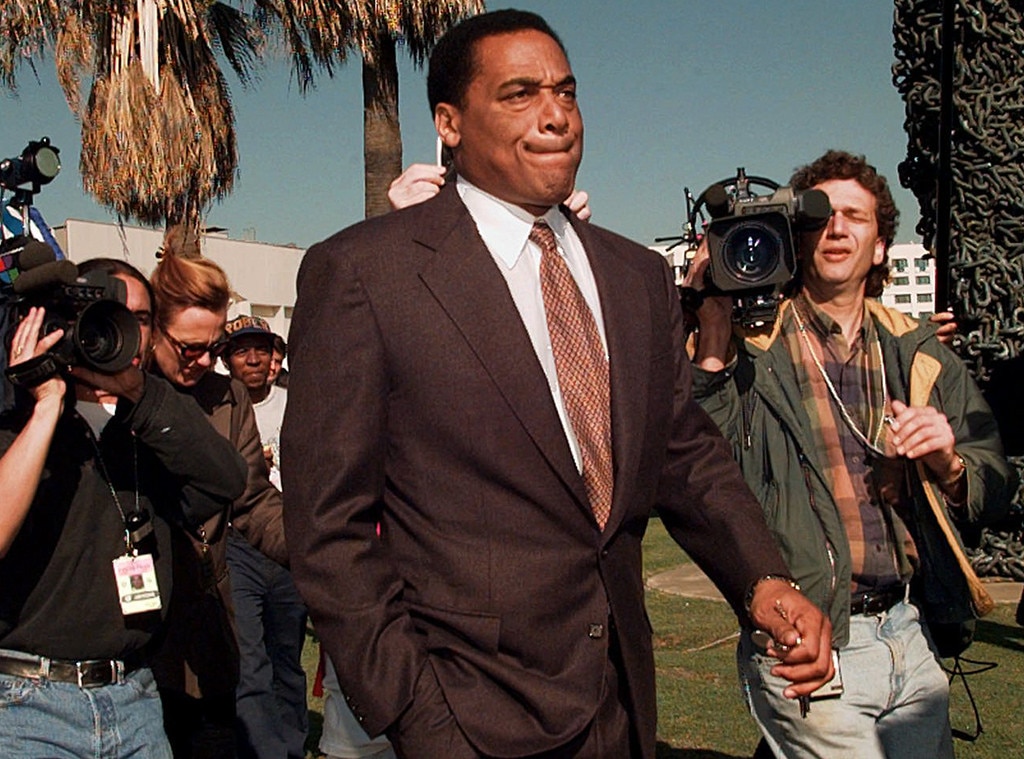
Prior to Marcia Clark bringing Christopher Darden onto the prosecution team, he was responsible for the investigation of Cowlings, who was first arrested because authorities suspected he helped O.J. Simpson avoid capture. However, the District Attorney’s office decided not to pursue charges against Cowlings, stating they didn’t have enough proof.
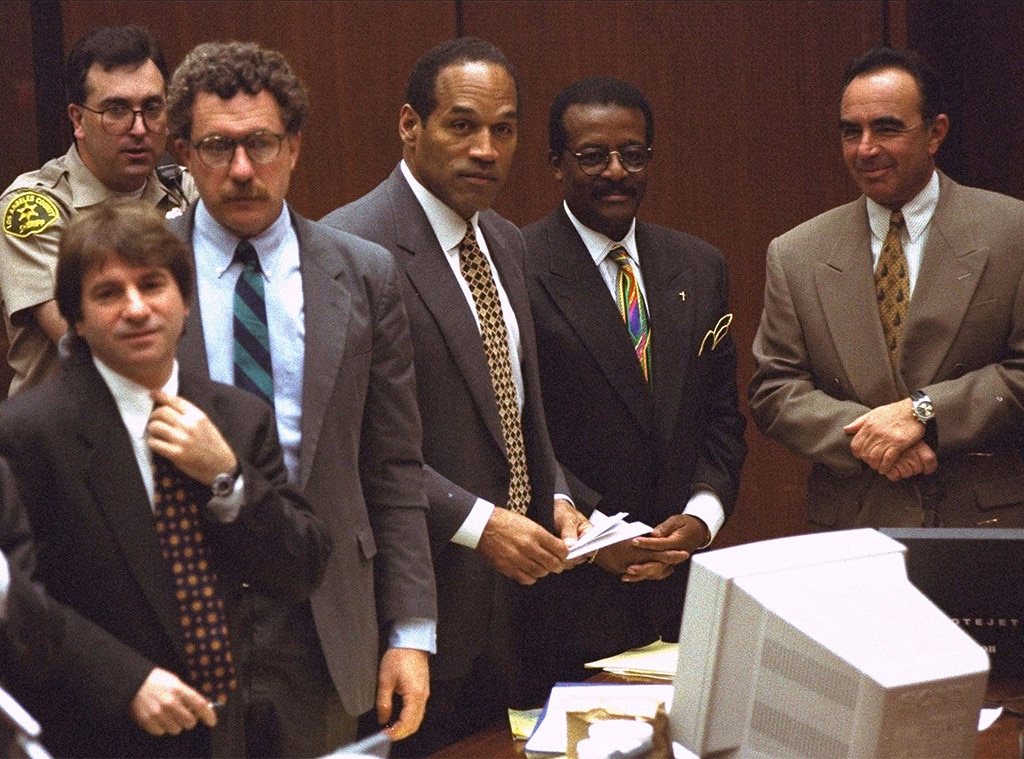
At least 10 lawyers worked on O.J.’s case, though some received more public attention than others and half of them didn’t address the court. These included civil rights activist Johnnie Cochran; Robert Shapiro; F. Lee Bailey; DNA experts and founders of The Innocence Project Barry Scheck and Peter Neufeld; Cochran’s colleagues Carl Douglas and Shawn Holley; O.J.’s close friend Robert Kardashian; Gerald Uelmen, who was the dean of Santa Clara University’s law school at the time; and Dershowitz.
In 2003, Kardashian passed away from esophageal cancer, and Cochran died from brain cancer in 2005. Following the trial, Shapiro shifted his legal focus to civil litigation and helped establish Legal Zoom. He also created the Brent Shapiro Foundation to raise awareness about drug abuse after his son tragically died of an overdose in 2005. Douglas and Holley continue to work as trial lawyers, representing many well-known celebrity clients.
In 2006, Uelmen became the executive director of the California Commission on the Fair Administration of Justice. Scheck and Neufeld are professors at Yeshiva University’s Cardozo School of Law. Bailey, who was later removed from practicing law in both Florida and Massachusetts, passed away in 2021.
I was so bummed when Alan Dershowitz stopped teaching in 2013, but then things got… complicated. He really became famous – or infamous, depending on who you ask – as the lawyer for Jeffrey Epstein. And then, oh my gosh, he was *everywhere* arguing about the investigation into whether President Donald Trump was working with Russia. He always said he wasn’t *defending* Trump, you understand, but fighting for the principles of due process and our civil liberties. I followed it all so closely – it was just… a lot.
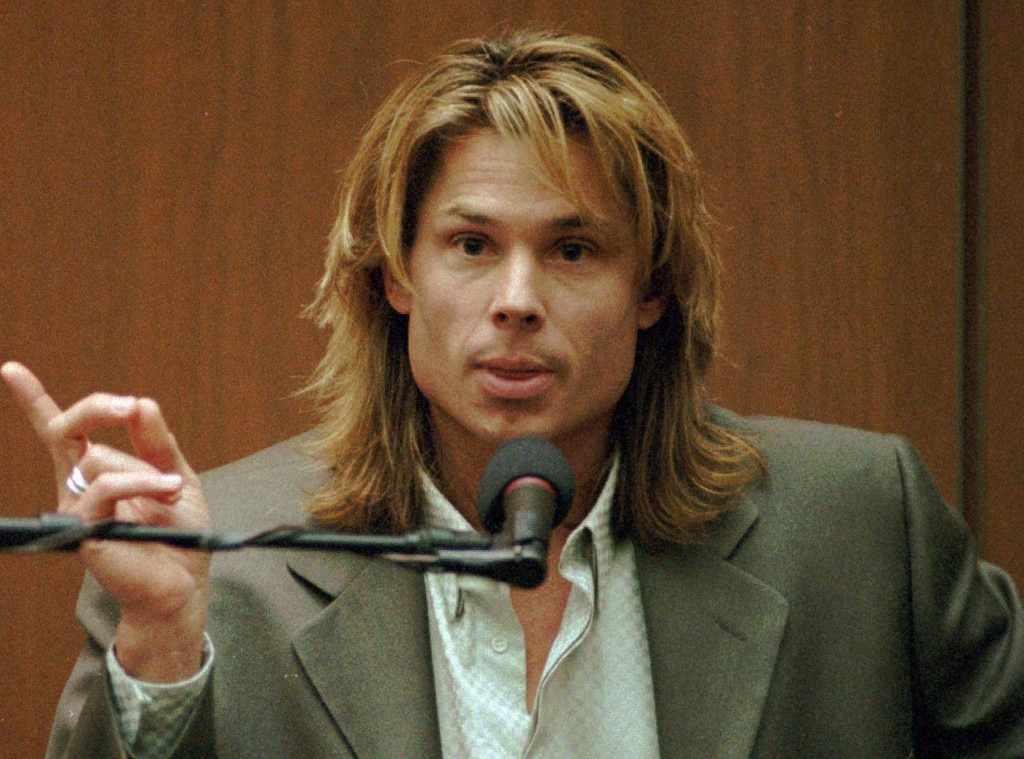
Brian “Kato” Kaelin, who was trying to become an actor, first started living in Nicole’s guest house in January 1993, just after meeting her in Aspen the previous month. He had planned to move into the condo O.J. owned to help with the children, he stated in court, but O.J. instead had him move onto his own property, reportedly because he didn’t want Kaelin spending so much time around his former wife.
Kaelin stated that on June 12th, O.J. came home from his daughter Sydney’s dance performance and expressed his frustration that Nicole was keeping him from seeing Sydney. He also mentioned that he thought the dress Nicole wore that evening was too revealing. Kaelin recalled that he and O.J. then went to McDonald’s and returned around 9:40 p.m.
Shortly after 10:45 p.m., he heard three distinct, loud bangs on his wall. Kaelin went outside to investigate, but only noticed a limousine parked nearby. The driver, Allan Park, later stated in court that he saw O.J. enter the house at 10:55 p.m.
According to Kaelin’s testimony, O.J. Simpson left at 11 p.m., and Kaelin assisted him with loading his luggage into the limousine. However, O.J. specifically requested to place a backpack in the trunk himself. Park then drove O.J. to LAX, where he caught an 11:45 p.m. flight to Chicago. (He flew back to Los Angeles the following day on a flight arriving at 12:10 p.m.)
Kaelin recalled receiving frequent death threats when he had a radio show. He later shared on OWN’s Where Are They Now? that faxes would arrive demanding, “Kato should be killed.”
During a 2015 interview with Barbara Walters, Kaelin stated his belief about his former friend, saying, “I think he’s guilty, in my opinion.”
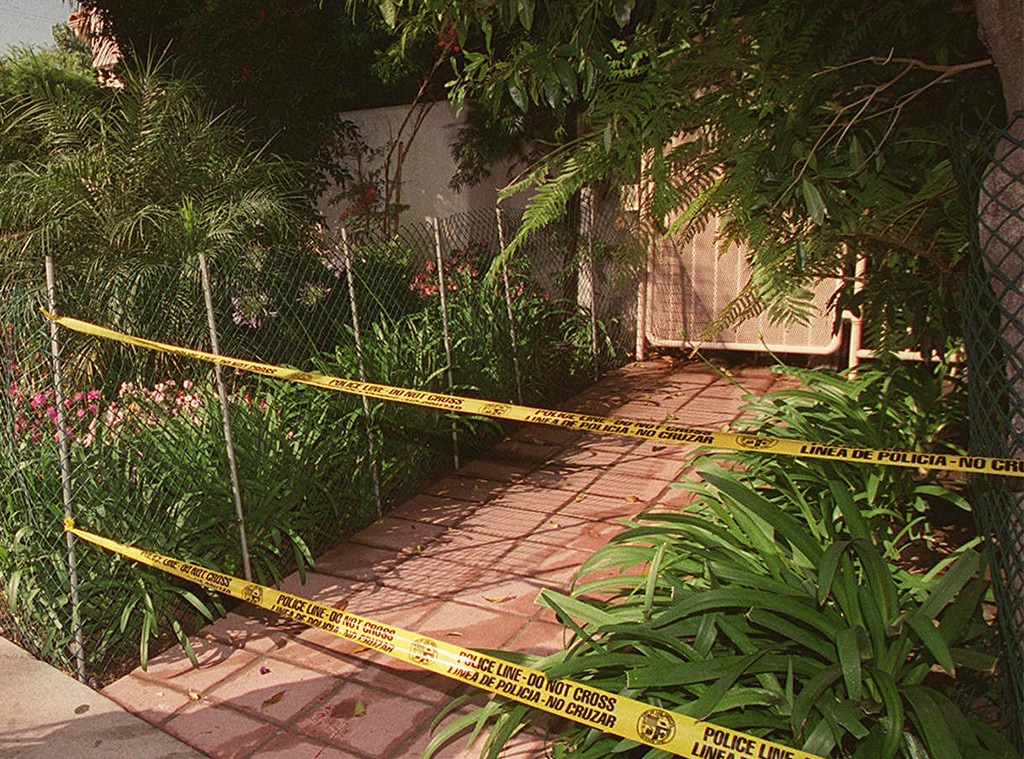
As a longtime follower of this case, I’ve always found the details fascinating. I remember learning that Kato Kaelin was so close to the Simpsons that Justin and Sydney actually named their dog after him! And it was Kato the Akita’s insistent barking that first alerted a neighbor-he was just walking his own dog around 10:15 p.m.-and led him toward Nicole’s house. The neighbor didn’t know who owned the Akita, so he took the dog home, thinking he and his wife could look for the owner the next day.
Kato appeared very anxious, so the couple followed him outside. The dog guided them to Nicole’s house, and there, just past the gate, they discovered a woman lying in a pool of blood.
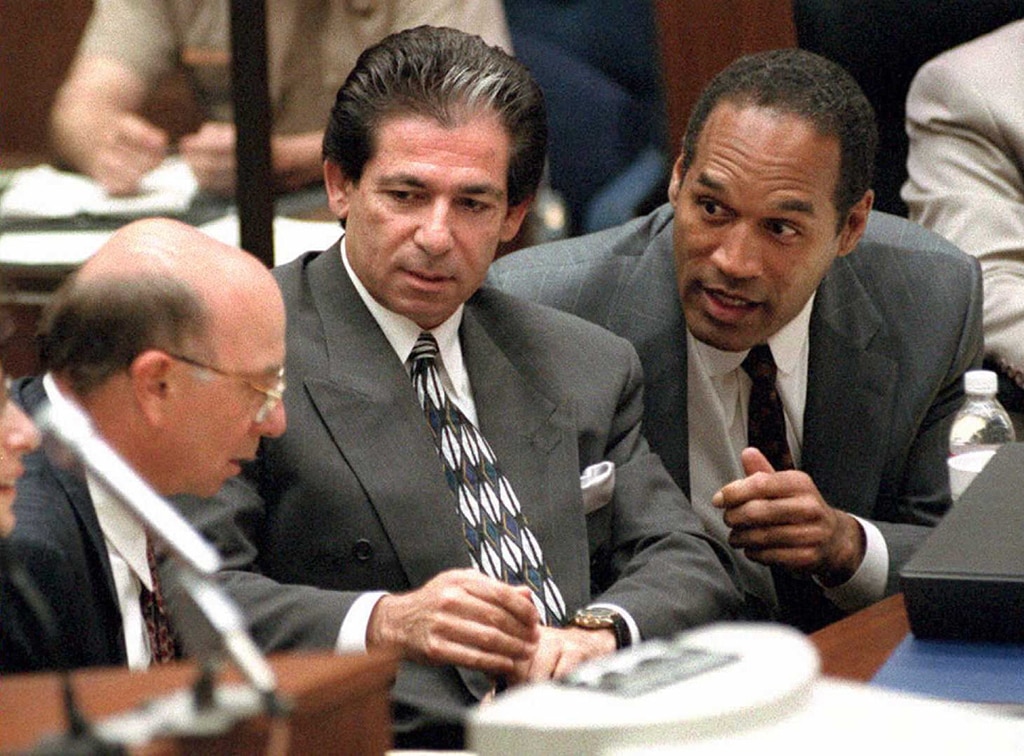
As a lifestyle expert, I remember when the Bruno Magli name unexpectedly popped up in a very serious case! It’s fascinating how details emerge, and in this instance, a bloody footprint at a crime scene was traced back to a size-12 Bruno Magli Lorenzo boot, giving the Italian shoemaker some unexpected – and certainly unwanted – publicity. It just goes to show you never know where a brand name might surface!
O.J. Simpson initially claimed he didn’t own a pair of the shoes and later stated in a court deposition that he would never wear them, calling them “those ugly ass shoes.” However, photos surfaced much later revealing him wearing the brand on two different occasions. More information can be found here.
According to Sam Poser, a men’s shoe buyer at Bloomingdale’s who gave testimony about showing O.J. Simpson a pair of Lorenzos, he was a pleasant person. Poser told Footwear News in 2016 that he couldn’t recall whether O.J. actually purchased them. He did remember, however, that O.J. bought a lot of comfortable, dress-casual clothing. Poser stated he actually remembered what O.J. *didn’t* buy more clearly than the specific shoe he did sell him. After the [criminal] trial concluded, a photo surfaced showing O.J. wearing Bruno Magli shoes at a Bills game. During the civil case-for which Poser was deposed-it was officially acknowledged that he was wearing those shoes. Poser believes that if that photograph had been found before the criminal trial, it could have drastically changed the outcome.

Defense lawyer Carl Douglas later explained to Dateline that his team subtly changed the decorations in O.J.’s Rockingham Avenue home before the jury’s visit. They wanted to create the impression that the former football star was more connected to his heritage than he actually was. A revealing photo of girlfriend Paula Barbieri was removed and replaced with African artwork and a picture of O.J.’s mother.
Deputy District Attorney Cheri Lewis believed it wouldn’t be right for the jury to see personal items in O.J.’s house, like pictures of him with his children or his collection of awards from his time playing for USC and the Buffalo Bills. She particularly emphasized this point because Nicole’s apartment had been completely emptied of furniture, keepsakes, and anything that made it feel like a home she shared with her children.
The jury visited O.J.’s home as part of the tour of the crime scene. This was to help them understand how far it was between the two places and to consider if O.J. Simpson could have committed the murders of Nicole Brown Simpson and Ronald Goldman, then made it back to his house with enough time to meet limo driver Allan Park and catch his 11:45 p.m. flight to Chicago. Essentially, they were trying to determine if his timeline was plausible.
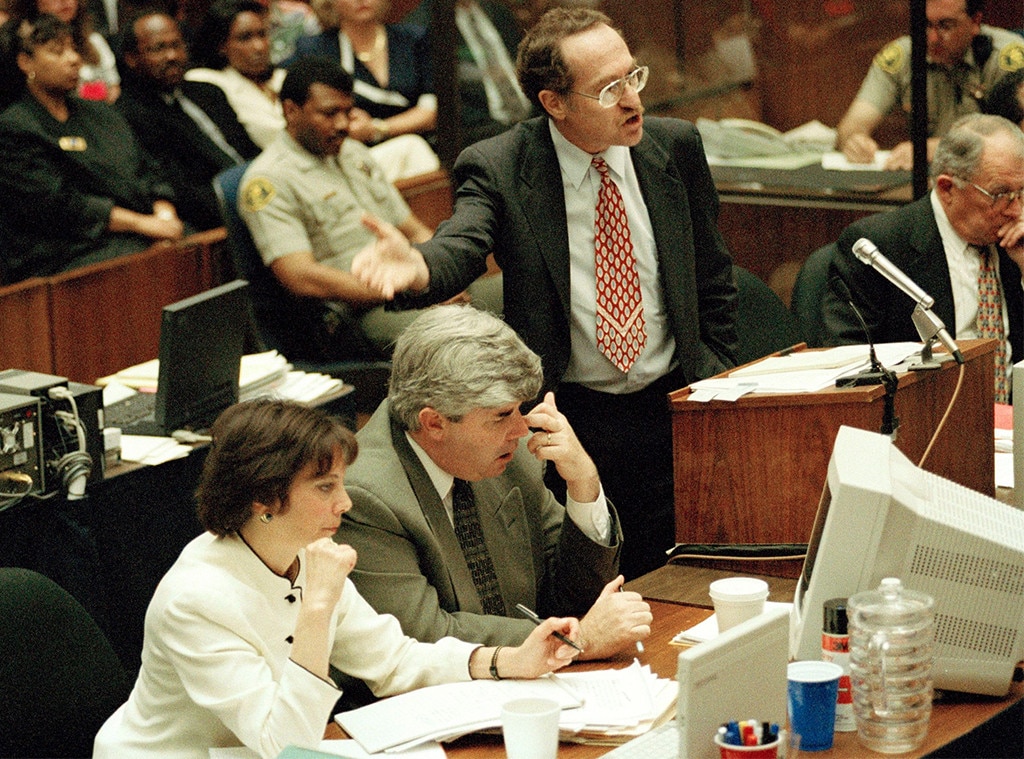
Dershowitz attended court occasionally, but primarily supported O.J.’s defense team remotely due to his commitments as a professor at Harvard Law School. Throughout the trial, he monitored coverage on both CNN and Court TV, and quickly sent real-time memos to his colleagues via fax, allowing them to review his insights directly in the courtroom. He essentially provided support and analysis from a distance while managing his teaching responsibilities.
He explained to the Christian Science Monitor in February 1995 that, in some ways, this was a first for trials in the 21st century. He believed that having a lawyer track the case from outside the courtroom, with fast access to research materials, represented a coming trend. “I think we’ll see more large law firms handling complicated lawsuits adopt this approach,” he said.
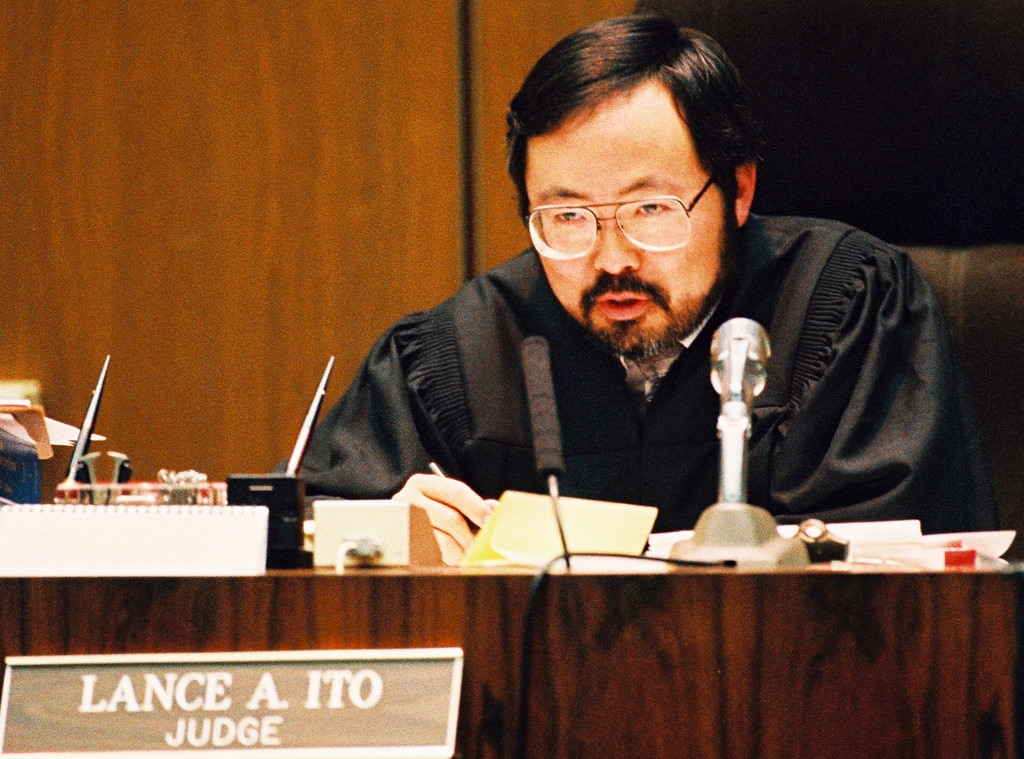
Judge Lance Ito thought about stopping the television cameras from broadcasting the trial (he had already blocked them from showing disturbing photos of the crime scene). However, the defense attorneys believed the public deserved to see everything, and, as many people recall, the trial became a very popular television event.
Meanwhile, Ito was very aware of-and worried about-how the media portrayed him. He actually enjoyed the fame, like when The Tonight Show With Jay Leno regularly featured the “Dancing Itos” as a humorous segment.
Oh my gosh, you won’t *believe* what happened! Peter Neufeld actually told TIME about it, and I’m still reeling! He said the judge thought it was *amazing* – loved it, even! – and wanted *all of us* to see it… in chambers! Can you even imagine? It sounds kind of funny, I guess, but Peter stressed how completely unacceptable it was. Seriously, a judge presiding over a murder trial – a case where two people died in the *most* gruesome way, and another person’s life is hanging in the balance – bringing the lawyers into chambers to watch… comic revues?! It’s just… unbelievable. I mean, the sheer inappropriateness of it all!
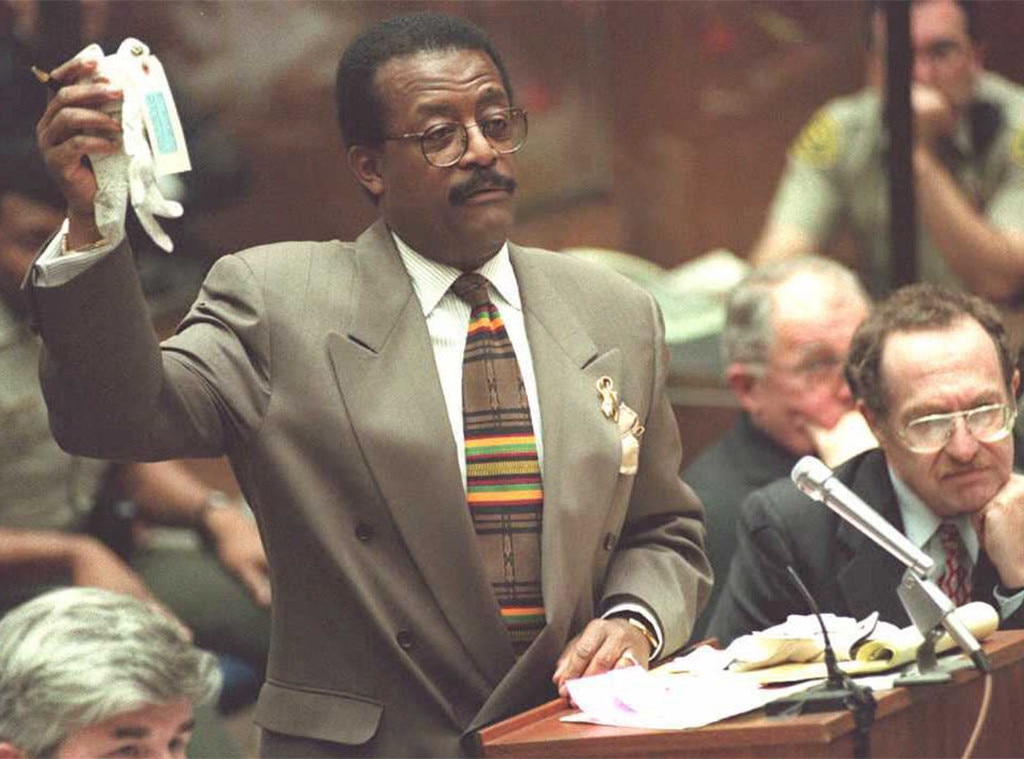
Chris Darden attempted to convince the court that the jury shouldn’t listen to the recording of Mark Fuhrman using the n-word. His reasoning was that it would be excessively disturbing to the Black jurors – who comprised the majority of the jury – and thus unfairly bias them against Fuhrman, making it prejudicial.
He stated, “If you permit Mr. Cochran to introduce this term and bring up the issue of race, the case will shift in its direction and focus: it will become a case centered around race.”
Johnnie Cochran wasn’t having it.
It really upset me to hear Mr. Darden acting like he was defending this man – it felt like a betrayal, honestly. That’s what a really experienced activist and lawyer told me when they were strongly criticizing the opposing counsel. I was shocked. Right after that, I saw Cochran give O.J. a hug and then head off to a funeral. It was a strange scene, to say the least. I just couldn’t believe what I was witnessing.
As I remember it, I warned Darden against using Fuhrman,” Cochran told TIME in 2001. “But I was truly let down by his actions. He went into the judge’s chambers with a copy of Andrew Hacker’s book, Two Nations, and gave one to Ito. I couldn’t believe he was doing that. Essentially, he was arguing that if the jurors heard that word-which he claimed was the most offensive in the dictionary-the trial would shift from the facts to whether the jurors believed people on the street thought ‘the man’ was receiving a fair trial. My immediate response to Darden was, ‘Ner, please…’
“I was incredibly angry with him,” the attorney explained. “It felt like a slap in the face to the entire Black community. What I said when I stood up wasn’t prepared beforehand – it came straight from my heart.”
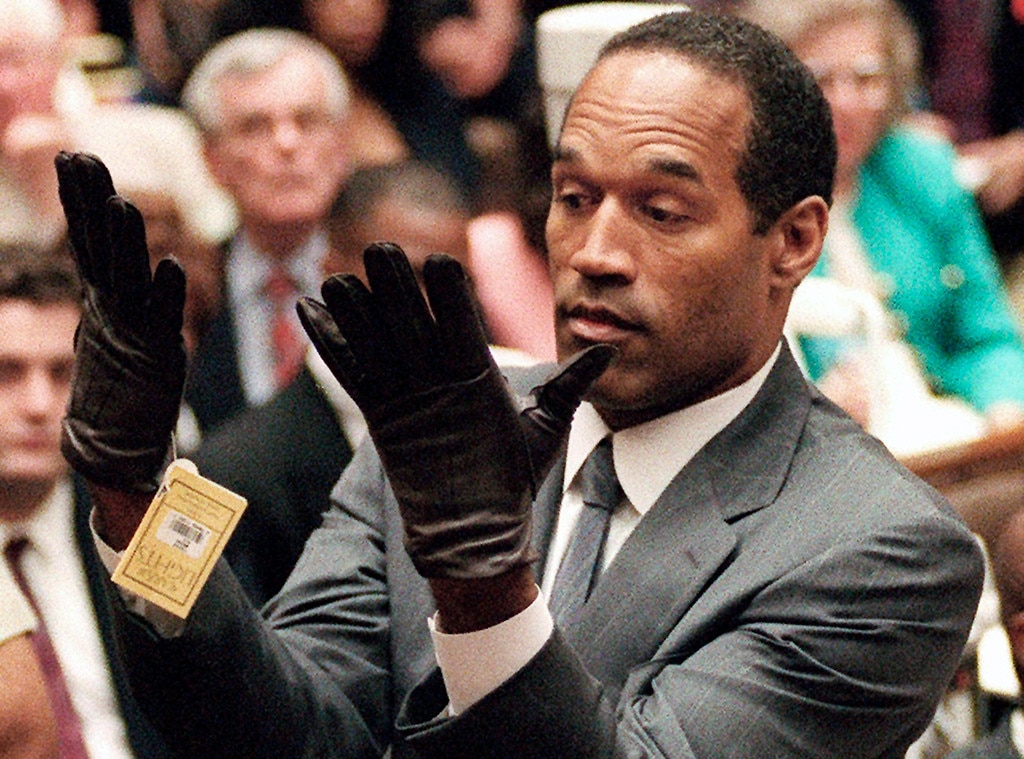
The well-known extra-large leather gloves – one discovered at the crime scene and the other behind O.J.’s home – were originally a matching pair. Nicole had purchased a similar pair for her husband back in 1990 at Bloomingdale’s. Only 200 pairs of these gloves were sold nationwide that year. It was a very limited run, and the uniqueness of the gloves became a key point in the investigation.
Evidence showed a small amount of Goldman’s DNA on the glove discovered at Rockingham, and the fibers from that glove were a match for the carpet inside O.J.’s Bronco. Blood from O.J., Nicole, and Goldman was also found inside the Bronco. Furthermore, a sock with traces of both O.J.’s and Nicole’s blood was located in his bedroom.
O.J. claimed his blood likely ended up at the Bundy residence during a visit with his children. His explanation for how he cut his finger was inconsistent. Initially, he stated it happened in Chicago, but later said the initial cut occurred in L.A., and he re-injured it while in Chicago.
During the trial, at the urging of prosecutor Darden and to the clear frustration of Clark and the delight of the defense team, O.J. Simpson put on the gloves and famously stated, “They don’t fit.”
The phrase “If it doesn’t fit, you must acquit,” became the most memorable line from the trial-everyone remembers the rhyme-according to many. Interestingly, Gerald Uelmen originally suggested the wording, but Cochran’s way of saying it was what really made it stick.
Uelmen explained to TIME that his main point was to offer a strong central idea for the entire case. He felt this was important because a lot of the supporting evidence didn’t quite align with the prosecution’s version of events.
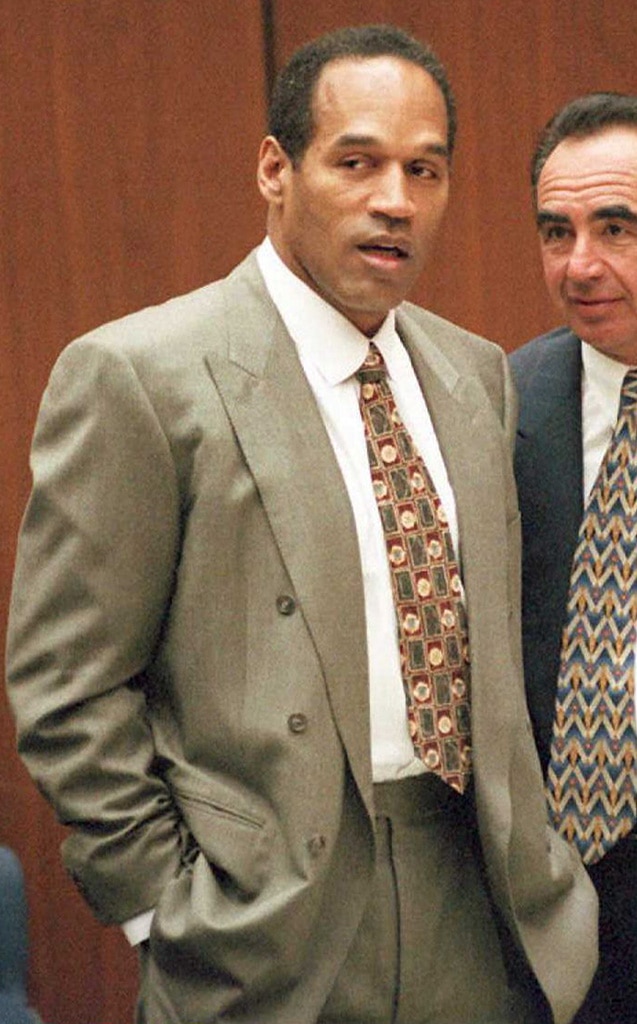
The glove discovered at Rockingham ultimately became one of the most talked-about parts of the trial and a significant win for the defense team. However, before the trial began, O.J.’s lawyers first attempted to prevent the glove from being used as evidence. They argued that the search and seizure of the glove was illegal and violated O.J.’s Fourth Amendment rights.
In a 2005 interview on Frontline, Uelmen stated, “We believed we made a strong argument that the glove shouldn’t have been admitted as evidence.” He continued, explaining that if the judge had agreed and excluded the glove, the outcome of the O.J. case likely would have been different. According to Uelmen, this would have meant Mark Fuhrman wouldn’t have been involved, as the prosecution already had a solid case without it. He believed the glove ultimately raised doubts about Fuhrman’s character and potential biases. Because Fuhrman became a key witness, these issues created significant problems for the prosecution’s case.
It’s actually quite ironic: had the judge adhered to the law – and I believe the law specifically required her to exclude that evidence…
In the end, he stated, “I believe we successfully argued that there was reasonable doubt, and we were fortunate to have a strong jury.”
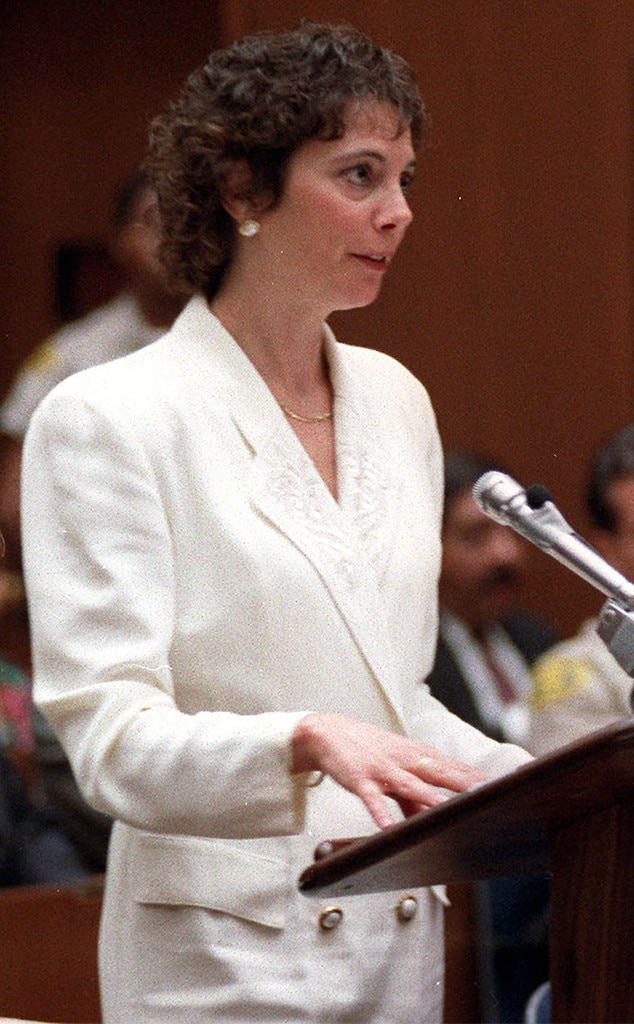
Marcia Clark had been with the L.A. County District Attorney’s Office’s special trials unit since 1989 when she began prosecuting O.J. for murder, but she constantly found herself on the defensive. Everything about her seemed to draw criticism – her professional style, and even a change in her hairstyle. Adding to the pressure, her ex-husband filed a lawsuit during the trial to gain primary custody of their two sons, claiming she was working too much to care for them properly. The National Enquirer published old topless photos of her taken during a vacation with her then-husband. Incredibly, even a potential juror, a woman, told Clark when asked about potential biases, “I think your skirts are too short, how about that?”
She was let go. But before that happened, Judge Ito remarked, “I was waiting for someone to bring that up.”
However, the families of those she was seeking justice for had complete trust in her, particularly before the trial began.
She consistently shows she cares about our family and how we’re doing, and I’m certain she’s working tirelessly on this case – it feels like she’s putting in 25 hours a day, seven days a week,” Fred Goldman, Ron’s father, said to the New York Times. “She goes above and beyond; I’d give her a score of 110 out of 100.
Nicole’s sister Denise Brown shared with The New Yorker, “I believe Marcia is a fantastic person, a truly wonderful woman, and I’m confident our entire family would agree with that.”
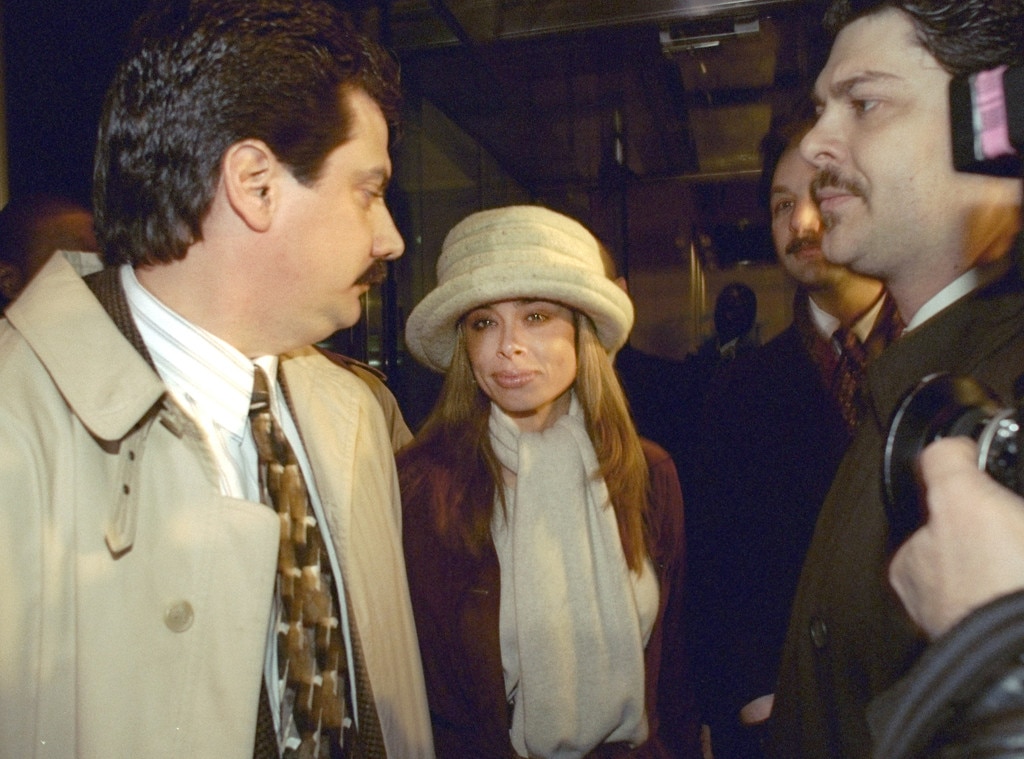
The defense team argued not only that detectives attempted to wrongly accuse O.J., but also suggested the murders stemmed from drug activity. They theorized that drug dealers went to the house searching for Faye Resnick, an interior decorator who was a friend of Nicole’s and had stayed at the house until the day before the killings. Resnick later became well-known as a cast member on The Real Housewives of Beverly Hills.
Resnick wrote a couple of books based on the case, beginning with Nicole Brown Simpson: The Private Diary of a Life Interrupted, published in 1994 during jury selection. Because of the revealing and sensational details she shared about Nicole’s alleged romantic life, Resnick ended up being a somewhat unreliable witness for the prosecution, even though she strongly believed O.J. Simpson had abused Nicole throughout their relationship and was ultimately responsible for her death.
Shattered: In the Eye of the Storm, about how the trial affected Resnick, came out in 1996.
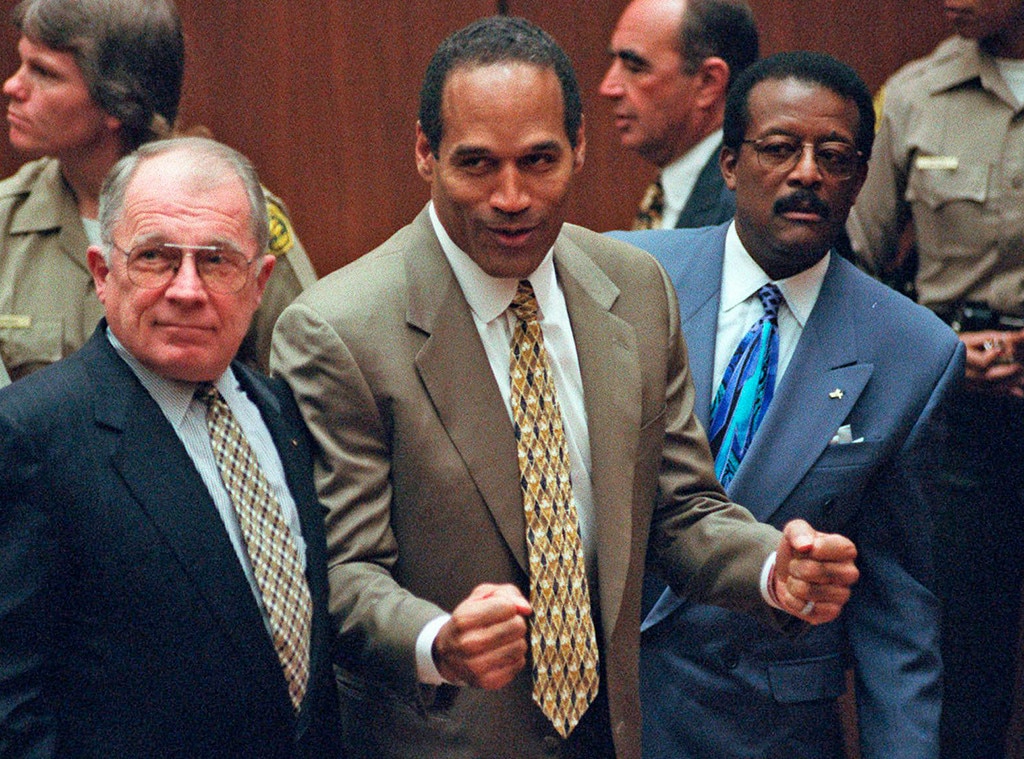
Oh my gosh, when Bob Shapiro got F. Lee Bailey to join the team, I nearly lost it! Shapiro was amazing, sure, but he was all about plea bargains, and this trial… this trial *needed* someone with serious murder trial experience, which Shapiro just didn’t have. And Bailey? He was a LEGEND! Everyone knew him from defending Albert DeSalvo – the “Boston Strangler” – on assault charges, and then Patty Hearst when she was accused of robbing a bank *with* her kidnappers! He actually *won* both of those cases, can you believe it?! It was a masterstroke, honestly. I knew then they had a real chance.
During the O.J. trial, some of Bailey’s most notable actions were provoking Darden into asking O.J. to try on the gloves in court and his questioning of Fuhrman during cross-examination. More details are available here.
Following O.J.’s acquittal, Bailey stated on CNN that Shapiro had originally suggested O.J. plead guilty to manslaughter-a claim Shapiro refuted, although numerous reports indicated discussions regarding a potential plea deal took place at his office.
Oh my god, you won’t *believe* what I read! Apparently, back in 2019, someone told the Highline at Huffington Post that they actually *tried* to fire Ben Shapiro! Can you imagine?! They said they tried to fire him for just being… well, an ahole, honestly. And get this – O.J. Simpson *told* him he was benched! Bob – that’s Shapiro – just said, ‘Fine,’ and announced he was going to tell everyone what *he* thought about O.J.’s guilt! They knew that would be a disaster *before* the trial even started, so they kept him around. Seriously, the drama! It’s insane!
Bailey eventually lost his law licenses in both Florida and Massachusetts. He then started a consulting business in Maine, but he couldn’t get permission to practice law there.
In 2014, he told the ABA Journal that he thought his involvement with the case had negative repercussions in Florida, Massachusetts, and Maine. He stated there was significant judicial resentment towards him because of his role in the O.J. Simpson trial.
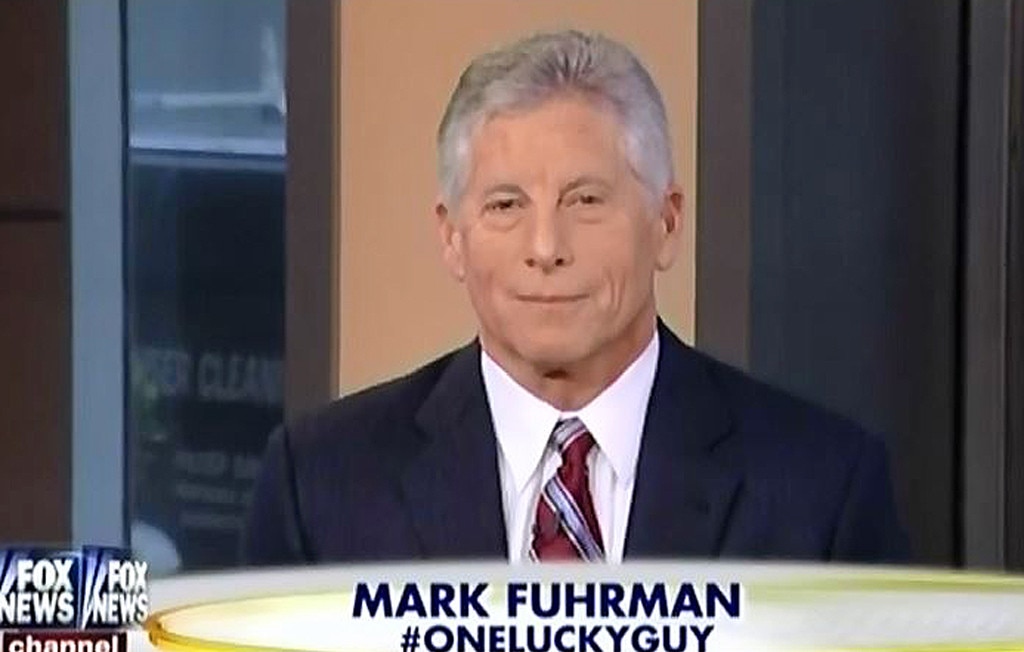
During questioning by Bailey, Fuhrman claimed he had never used the n-word. However, the defense quickly proved this false, presenting a recording of him using the slur while speaking with a screenwriter hoping to break into the industry. When the jury was excused, the detective then invoked his Fifth Amendment right against self-incrimination when asked if he had fabricated or planted evidence in the O.J. case.
According to a memo the New York Times obtained, Dershowitz questioned why the prosecution needed Fuhrman to testify. Fuhrman had simply noticed the glove at O.J. Simpson’s home and showed it to other detectives. He didn’t actually take the glove from the crime scene or officially log it as evidence, meaning he wasn’t involved in maintaining the chain of custody.
Prior to the trial’s end, Fuhrman, who had spent 20 years with the LAPD, retired. He accepted a plea deal for perjury in 1996, and in 1997, he published Murder in Brentwood, a book detailing the O.J. case. This was the first of several books he has written since then, focusing on true crime, the media, and the legal system. He later relocated to Idaho and became a frequent commentator on Fox News.
Throughout the case, Fuhrman has consistently stated that he followed proper police procedure and that the evidence clearly showed O.J.’s guilt. In a 2016 interview with the New York Post, he said, “We’ll see another case like O.J.’s, and what we’ve learned is that being politically correct and acting foolishly can overcome the pursuit of justice.”
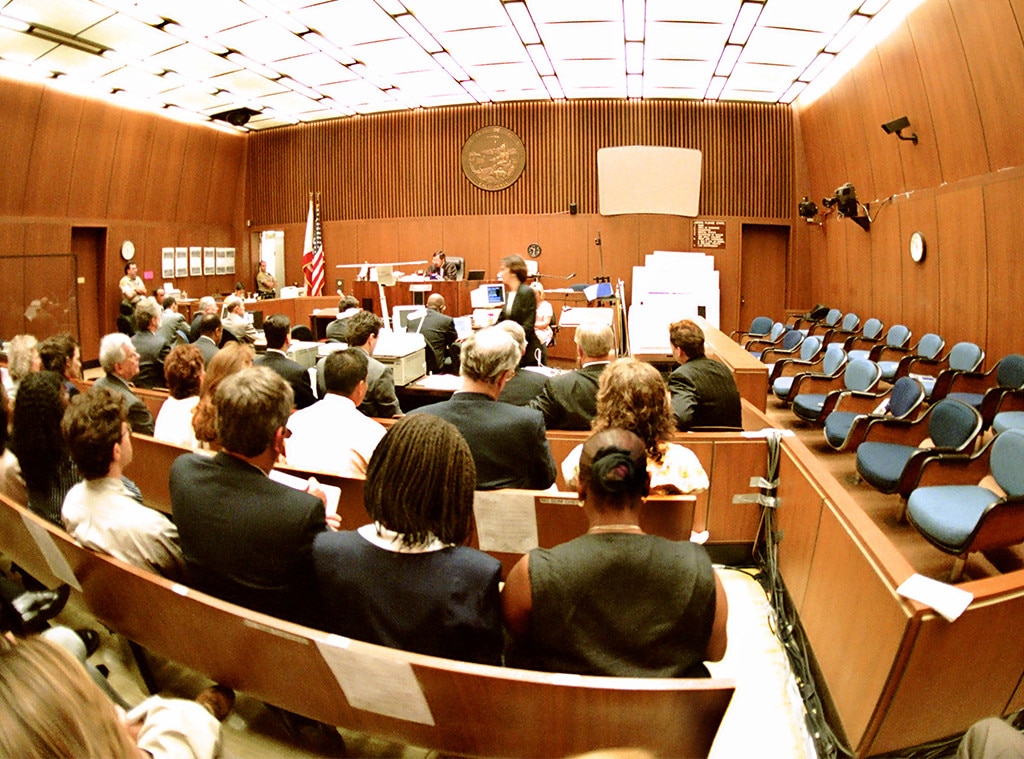
During the trial, 10 of the 27 people present-which included 12 jurors and 15 alternates-were excused for different reasons. Ultimately, only four of the initial jurors remained to deliver the final verdict.
Lionel Cryer was initially chosen as a backup, but ultimately became a full member of the panel. He shared with TopMob News in 2017, “I wasn’t thrilled.” He explained that when he saw who else would be involved in the decision-making process, he realized it would be a challenging experience.
Ultimately, the jury – consisting of 10 women and 2 men – acquitted O.J. Simpson. The jurors were racially diverse, with nine being Black, two white, and one Hispanic.
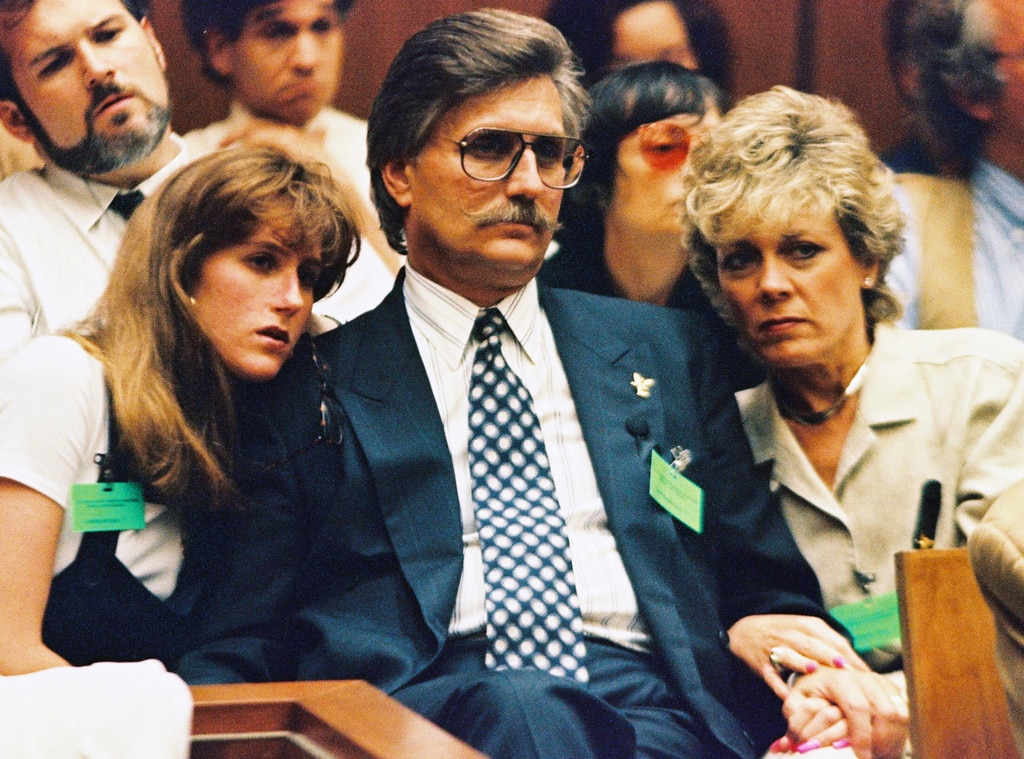
During the trial, Chris Darden shared with the Los Angeles Times that he would sometimes look at the Goldmans. He said, “If you could see the pain and sadness on their faces…” He continued, “Sometimes I see them smiling, but when they’re in court, they’re really suffering inside… The number of people affected just keeps growing. The Goldmans are victims, the Browns are victims, and even the Simpsons are victims. Sydney and Justin Simpson are also victims. We’re all victims because the sadness, pain, and suffering are felt by everyone involved.”
Interestingly, even though O.J. Simpson was acquitted of murder in criminal court, he was later found responsible for the deaths of Ron Goldman and Nicole Brown Simpson in a civil lawsuit. As a result, he was ordered to pay $33.5 million to the Goldman and Brown families.
Which he has not done.
Read More
- Silver Rate Forecast
- Gold Rate Forecast
- How To Watch Under The Bridge And Stream Every Episode Of This Shocking True Crime Series Free From Anywhere
- BrokenLore: Ascend is a New Entry in the Horror Franchise, Announced for PC and PS5
- South Park Creators Confirm They Won’t Be Getting Rid of Trump Anytime Soon
- Britney Spears’ Ex Kevin Federline Argues Against Fans’ Claims About His Tell-All’s Effect On Her And Sons’ Relationship
- 7 1990s Sci-fi Movies You Forgot Were Awesome
- 🚀 XRP to $50K? More Like a Unicorn Riding a Rainbow! 🌈
- Sony to Stimulate Japanese PS5 Sales with Cheaper, Region-Locked Model
- Taming Quantum Chaos: A Stochastic Approach to Many-Body Dynamics
2025-10-03 15:21